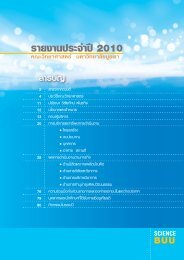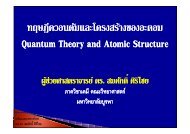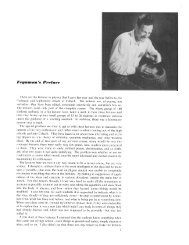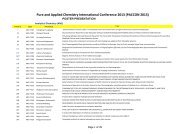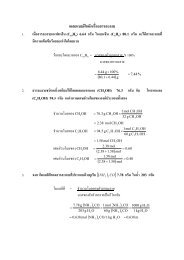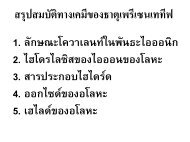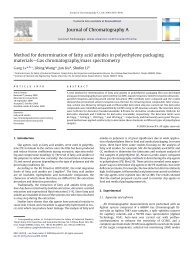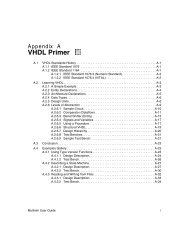USER MANUAL SWAN Cycle III version 40.72A
USER MANUAL SWAN Cycle III version 40.72A
USER MANUAL SWAN Cycle III version 40.72A
You also want an ePaper? Increase the reach of your titles
YUMPU automatically turns print PDFs into web optimized ePapers that Google loves.
112 Appendix D<br />
Formal description of the 1D- and 2D-spectral file<br />
This description refers to either write or read energy/variance density spectra to or<br />
from the file.<br />
The description of the file to write or read source terms is identical to this description<br />
except that the quantities obviously differ.<br />
The format that is used by <strong>SWAN</strong> or should be used by the user when offering the file<br />
to <strong>SWAN</strong> is free format (FORTRAN convention) except that all keywords and names of<br />
quantities (see below) should start on the first position of the line on which they appear<br />
(see Appendix B for the syntax of keywords). This format implies that all information<br />
on each line after the required input for <strong>SWAN</strong> is ignored by <strong>SWAN</strong>. This can be used to<br />
enter user’s information at the discretion of the user.<br />
First line the keyword <strong>SWAN</strong> followed by <strong>version</strong> number<br />
Then if nonstationary computation: the keyword TIME<br />
if stationary computation: not present<br />
Then if nonstationary computation: time coding option; ISO-notation (=1) is recommended<br />
if stationary computation: not present<br />
Then • the description of the locations:<br />
if Cartesian coordinates: the keyword LOCATIONS<br />
if spherical coordinates: the keyword LONLAT<br />
• number of locations<br />
• for each location<br />
if Cartesian coordinates: x− and y−coordinate (in m, problem coordinates)<br />
if spherical coordinates: longitude and latitude<br />
Note that if the file is used for input for <strong>SWAN</strong> (but not generated by<br />
<strong>SWAN</strong>) and the user so desires, the names of locations can be written<br />
behind the two coordinates; these names are ignored by <strong>SWAN</strong> when<br />
reading the file (see remark on format above).<br />
Then the frequency data (for 1D- and 2D-spectra):<br />
• the keyword AFREQ or RFREQ (to distinguish between absolute and relative frequencies)<br />
• number of frequencies<br />
• a column with frequencies always in Hz (each on a new line)<br />
Then the direction data (only for 2D-spectra):<br />
• the keyword NDIR or CDIR (to distinguish between nautical and Cartesian direction)<br />
• number of directions<br />
• a column with directions always in degrees (each on a new line)<br />
Then the group describing the quantities in the tables of this file (see the above examples):<br />
• the keyword QUANT<br />
• number of quantities





